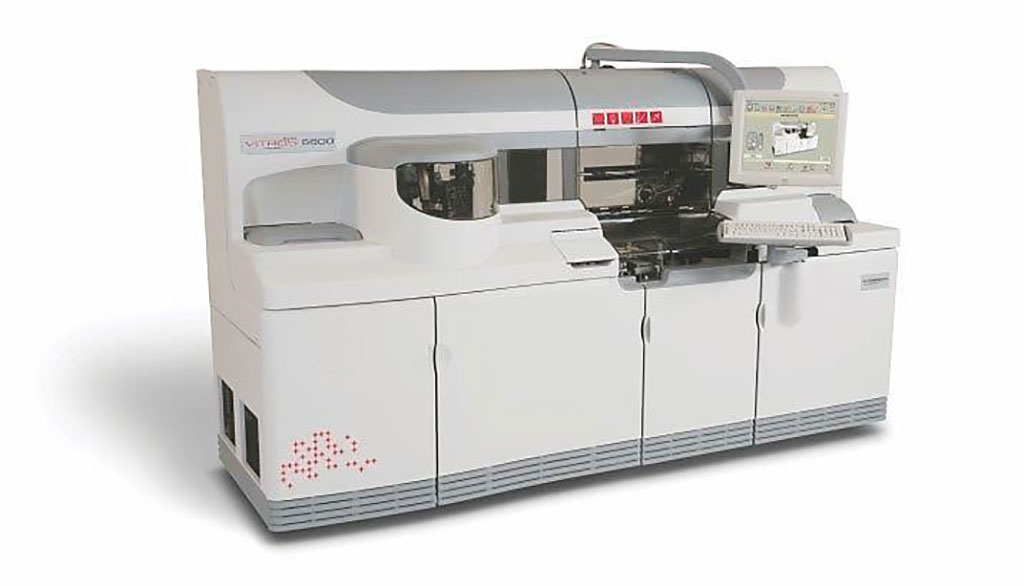Reference Intervals for Liver Function Tests Established for Minors
By LabMedica International staff writers
Posted on 04 Feb 2021
The liver is a large and complex organ that plays a central role in carbohydrate, protein, and fat metabolism. Liver function tests can reflect the degree of damage to human liver parenchyma, fibrosis, synthesis status, and coagulation function.Posted on 04 Feb 2021
The clinical interpretation of pediatric reference intervals (RIs) is executed in the context of age‐ and sex‐specific dynamics. Children and adolescents differ greatly from adults in terms of growth, development, and eating habits, so adult RIs are no longer applicable to the pediatric population.

Image: The Ortho VITROS 5600 integrates clinical chemistry and immunoassay testing (Photo courtesy of Ortho‐Clinical Diagnostic)
Laboratory Medical Scientists at the First Hospital of Jilin University (Changchun, China) prospectively recruited 6,322 children and adolescents, ages ranged from 1 to less than 18 years from August 2017 to November 2018. Among the participants, 49.3% (3,119/6,322) were males and the male to female ratio is 1:1.03.
Serum samples were collected from all participants after overnight fasting for more than eight hours (3–6 hours under 3 years old), blood was taken between 7:30 and 9:30 in the morning by professional nurses, according to standard operating procedures. The measurements of biochemical analytes were run with Ortho VITORS 5600 (Ortho Clinical Diagnostic, Raritan, NJ, USA), a dry versatile chemistry system.
The scientists reported that age and sex differences were present in all analytes except serum total protein. The serum albumin ALB), total protein (TP), γ‐glutamyl transferase (GGT), total bilirubin (TBIL), and unconjugated bilirubin (Bu) levels increased with age while serum aspartate aminotransferase (AST) was the converse. The serum alanine aminotransferase (ALT) level reached a trough at the age of five and later steadily in males, but slowly decreased in females. The serum alkaline phosphatase (ALP) level dropped rapidly after reaching a peak at nine years old in females and 12 years old in males.
The authors concluded that many analytes showed age or sex differences, especially in puberty. ALP presented complex partition of RI (11 groups). The levels of serum ALB, TP, GGT, TBIL, direct bilirubin (DBIL), and Bu increased with age, while serum ALT, AST and ALP showed complicated trends. The study was published on January 22, 2021 in the Journal of Clinical Laboratory Analysis.
Related Links:
First Hospital of Jilin University
Ortho Clinical Diagnostic




 assay.jpg)









